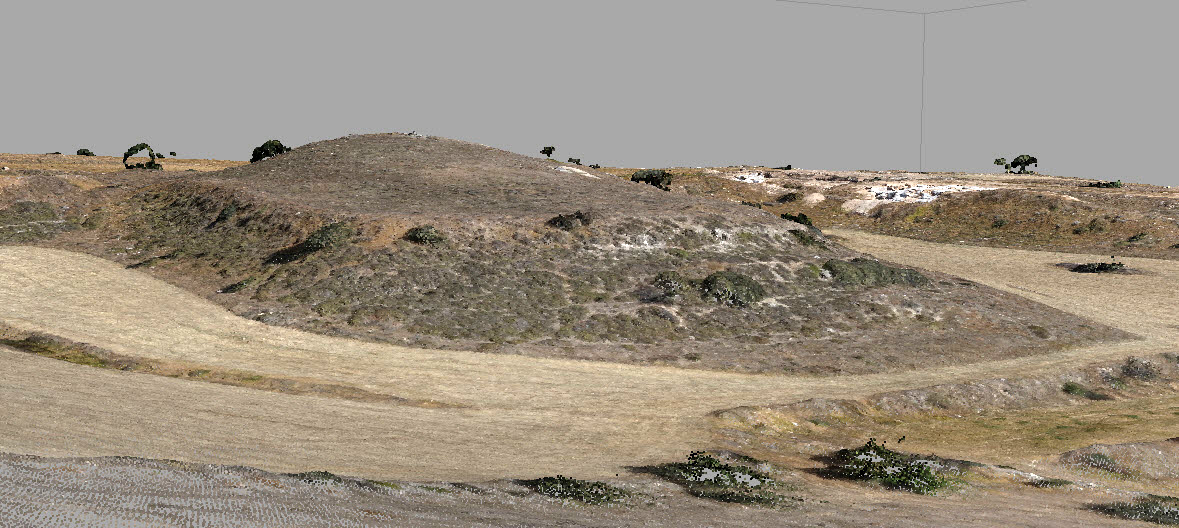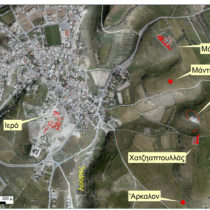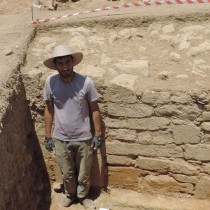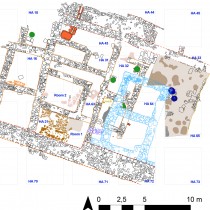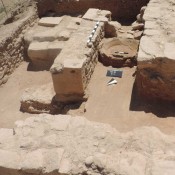The impressively sized burial mound at Laona and the extensive complex of workshops on the plateau of Chatziaptoullas are two unique monuments of ancient Cyprus, completely unknown prior to the archaeological project of surveying the landscape of Ancient Paphos. Since 2006, the project is being realized in the greater area of the Kouklia community, headed by Professor Maria Iakovou from the department of History and Archaeology of the University of Cyprus. Both the excavation and management of the finds is being done by Cyprus University students from all degree levels, with 2 to 4 students from universities abroad being accepted on the project during the summer.
It is worth mentioning that in an effort to manage and store the great bulk of materials coming from the excavation of the two new monuments, the Department of Antiquities of Cyprus has granted the Cyprus University team a renovated country house which will function as a laboratory, research and information centre. This year, six specialized seminars took place at the centre and one open event attended by a great number of residents in the area.
The excavation at Laona
The 2017 expedition at Laona aimed to complete investigating the south east part of the burial mound, along with carrying out a study regarding the method of this rare monument’s construction. At the present stage of research, the burial mound’s construction dates to the early Ptolemaic era (3rd c. BC). Dr Takis Karkanas, head of the Wiener Archaeo Environmental Laboratory of the American School of Classical Studies at Athens, undertook the micro morphology study for which extensive sampling was done on the north and east trench that currently exceeds 7 metres.
The burial mound is neither the only nor the most ancient monument of Laona; the earth transported for its construction covered a 5th c. BC fortress complex with towers and facing stairways, preserving it at a height of 6 metres. To date, 64 metres of the east side have been revealed. For the structure of the fortress, an extensive use had been made of identical plinths (40x 50 cm), constructed in a mould. Till now, analyses of the materials have produced two “recipes” for making plinths. For the purpose of preventive maintenance of the sensitive materials, the Laona monument will remain almost entirely covered until the excavation is complete and a study is prepared for its preservation and enhancement.
The excavation on the Chatziaptoullas plateau
In Cyprus of the Classical era, the Chatziaptoullas plateau must have been the administrative-economic centre, i.e. the acropolis, of the ancient city of Paphos. The ruins of an emblematic building are visible at the north east corner which had been partly excavated by a British expedition in the 1950s and was never published. Rightly, however, it is believed to be the palatial complex of the Classical era.
Next to it (to the west), along the north side of the plateau, the Cyprus University expedition identified and is excavating a complicated complex that had undoubtedly been erected by the royal dynasty of Paphos in the early 5th century B.C. for the management of economic resources. Ιt covers an area of 65 metres in length. Its production and storage units are built in tiers outside the acropolis wall. The masonry of the workshop installations is still preserved at a height of 1.5-2metres and backfills have helped preserve tools (mill stones, weights, conduits, olive presses), amphorae, and abundant archaeo environmental data that will allow the city’s economic model to be reestablished
To date, 6 separate units and communication corridors have been identified and are being excavated. The purpose of the 2017 excavations was to complete investigating Unit 3, a single 69 sq m. workshop space and the small, adjacent Unit 4. The spatial distribution of the material remains from Units 3 and 4 seems to correspond with the three stages of olive oil production: a) crushing (from the olive fruit to a single mass of olive pulp); b) compressing the pulp; and c) separating the oil from the remaining fluids.
Up to now, 545 pieces of amphorae have been recorded as part of the study of the material remains. Apart from the ones made locally, there are a significant number of imported amphorae, coming from the Phoenician coast, Syria and North Africa, while Aegean amphorae are predominant (e.g. from Chios, Thassos, Mende, Rhodes, Kos).Most of them were made in the 4th century BC, but a significant number of 5th-century amphorae comes from the workshops of Samos-and Miletus. This year an inscribed (dipinto) handle was found of a Cypriot amphora, in the syllabic script of Paphos. Written on it is the name Onasas in the nominative case, followed by an illegible father’s name in the genitive case (probably ta-mo-se, i.e. Onasas of Damos ).
Information about the PULP Project (the Palaepaphos Urban Landscape Project) 2006-2017, its collaborators, annual expeditions, talks and announcements, past or future, in institutions abroad and in conferences and workshops in Cyprus and Greece, as well as publications to date of relevant articles, can be found on the webpage: https://ucy.ac.cy/pulp/
